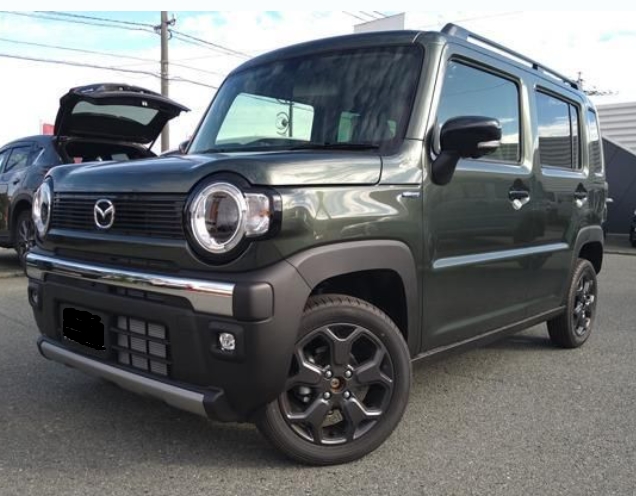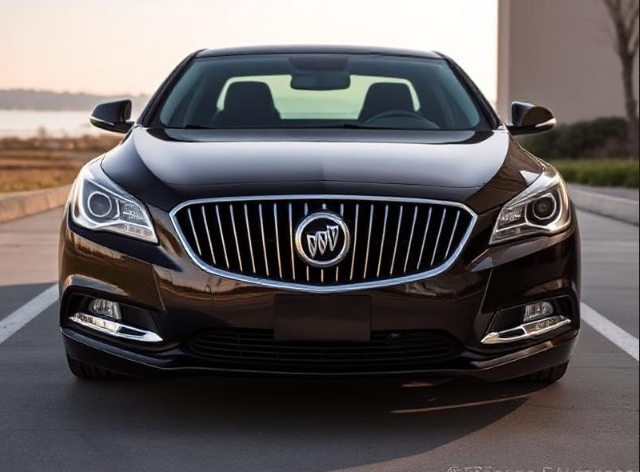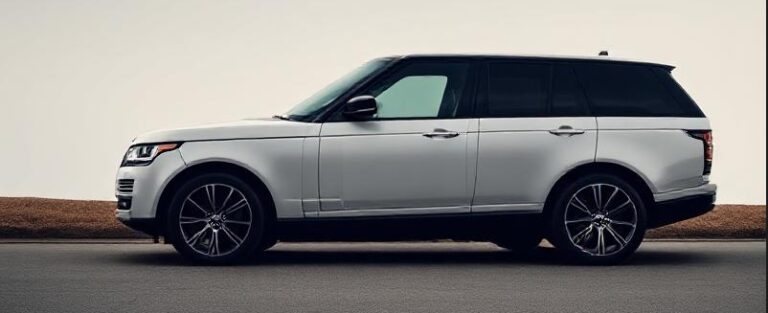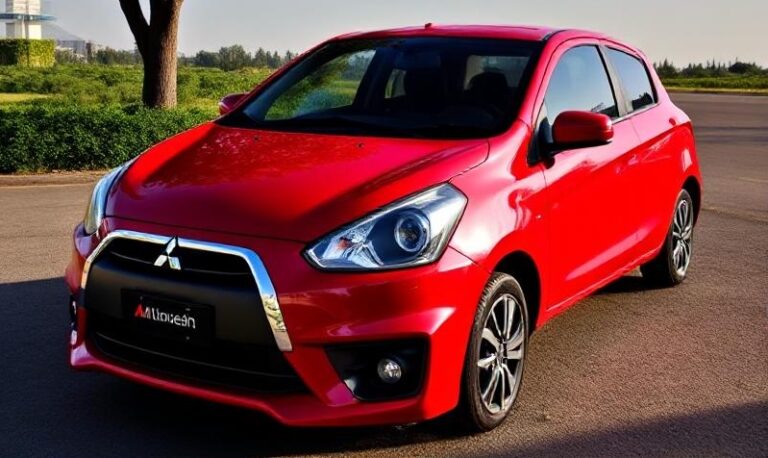The Unassuming Giant: Tracing the Evolution of the Mazda Flair
In the dense, bustling urban landscapes of Japan, a unique automotive category reigns supreme: the kei jidōsha, or kei car. These miniature vehicles, defined by strict government regulations on size and engine displacement, are paragons of efficiency, practicality, and ingenious packaging. While global automotive enthusiasts might gravitate towards Mazda’s sporty MX-5 or its elegant CX series, within Japan, the humble Mazda Flair plays a crucial role in the brand’s domestic portfolio. The Flair is not a ground-up Mazda creation but rather a masterclass in strategic partnership—an OEM (Original Equipment Manufacturer) rebadged version of the perennially popular Suzuki Wagon R.
To understand the Flair is to understand the pragmatism of the modern Japanese auto industry. Developing a kei car from scratch is a monumental investment for a segment with razor-thin profit margins. By leveraging Suzuki’s unparalleled expertise in small-car manufacturing, Mazda can offer its customers a competitive, reliable, and technologically advanced kei car through its own dealership network. The history of the Flair, therefore, is a direct reflection of the evolution of one of Japan’s most iconic vehicles, tracked through a Mazda lens.
First Generation (MJ34S/MJ44S): 2012–2017
The Mazda Flair made its debut in October 2012, entering the market as a direct replacement for the outgoing Mazda AZ-Wagon, which itself was a rebadged Suzuki Wagon R. This new model coincided with the launch of the fifth-generation Suzuki Wagon R, a vehicle that introduced a revolutionary piece of technology to the kei car segment: a mild hybrid system.
This first-generation Flair was built upon a new, lightweight, and highly rigid platform. The core innovation was Suzuki’s “Ene-Charge” (short for Energy Charge) system. This was not a hybrid system in the traditional sense, where an electric motor could propel the car on its own. Instead, it featured an Integrated Starter Generator (ISG) and a small lithium-ion battery pack stored under the passenger seat. The ISG would regenerate energy during deceleration, storing it in the battery to power the vehicle’s electronics—from the radio to the air conditioning—thus reducing the load on the engine and significantly improving fuel efficiency. This system, coupled with an advanced automatic start-stop function, allowed the Flair to achieve class-leading fuel economy figures.
The model lineup was strategically split into two distinct visual styles, a practice common in the kei car market to appeal to different tastes.
- Standard Mazda Flair: The standard model featured a friendly, approachable design with a simple horizontal grille and large, practical headlights. It was aimed at buyers prioritizing function and economy above all else. The trim levels were:
XG (2012-2017): The entry-point to the Flair family. It came equipped with the R06A 658cc 3-cylinder naturally aspirated engine producing 52 horsepower. Standard features were basic, including manual air conditioning, key-operated ignition, and steel wheels with hubcaps. It was available in both front-wheel drive (FWD) and all-wheel drive (AWD).
XS (2012-2017): The more premium trim. It added a host of convenience features such as full automatic air conditioning, a push-button start system with keyless entry, 14-inch alloy wheels, and power-folding side mirrors. It used the same naturally aspirated engine but offered a more comfortable and modern user experience.
- Mazda Flair Custom Style: For buyers wanting a more aggressive and sporty aesthetic, Mazda offered the Flair Custom Style. This variant was distinguished by a completely different front fascia, featuring a large chrome-accented grille, slim, vertically stacked projector headlights (often HIDs), and a sculpted front bumper with integrated fog lights. It also included side skirts and a rear roof spoiler.
Custom Style XS (2012-2017): This trim mirrored the equipment level of the standard XS but was packaged within the sporty Custom Style body. It featured the naturally aspirated R06A engine.
Custom Style XT (2012-2017): The top-of-the-line performance model. The XT was equipped with an intercooled, turbocharged version of the R06A engine, boosting power to the kei car limit of 64 horsepower. This provided brisk acceleration perfect for navigating city traffic and highways, making it the most desirable model for enthusiastic drivers. It came standard with larger 15-inch alloy wheels and paddle shifters on the steering wheel.
In 2014, the Flair received a mid-cycle update, adopting Suzuki’s enhanced “S-Ene Charge” system. This improved version allowed the ISG to provide a brief, mild motor assist during take-off and acceleration, further improving fuel efficiency and smoothing out the driving experience. This update was accompanied by the model code change to MJ44S.
Second Generation (MJ55S/MJ95S): 2017–Present
In February 2017, the second-generation Mazda Flair was launched, once again in lockstep with its Suzuki counterpart, the sixth-generation Wagon R. This new model represented a significant leap forward in platform technology, safety, and design philosophy.
The foundation of the new Flair was Suzuki’s “HEARTECT” platform. This advanced architecture utilized ultra-high-tensile steel to create a frame that was both significantly lighter and more rigid than its predecessor. The benefits were threefold: improved collision safety, sharper handling and stability, and even greater fuel efficiency due to the weight reduction.
The hybrid system was now a full-fledged “Mild Hybrid” system. The ISG’s motor assist function was expanded, allowing it to assist the engine for up to 10 seconds under acceleration. It also enabled a “creeping” function using only the electric motor after an idle stop, making for silent, smooth restarts in traffic.
Visually, the second generation was far more daring. The standard Flair adopted a controversial but highly functional design. It featured a distinctive two-tiered front face with the slim LED positioning lights located high up near the bonnet and the main headlamps housed in large units in the bumper. The overall shape was extremely boxy, maximizing interior space within the kei car footprint.
- Standard Mazda Flair (Hybrid): All non-turbo models were now officially designated as “Hybrid,” proudly advertising their standard mild-hybrid powertrain.
Hybrid XG (2017-Present): The new base model. While it retained its entry-level position, it now came standard with the mild hybrid system. It also included a basic version of Mazda’s advanced safety suite (branded i-ACTIVSENSE, but using Suzuki’s “Dual Sensor Brake Support” technology), which included autonomous emergency braking.
Hybrid XS (2017-Present): The premium standard model. The XS added desirable features like LED headlights, 14-inch alloy wheels, a leather-wrapped steering wheel, and more comprehensive safety features, including a head-up display that projected speed and safety warnings onto a small screen on the dashboard.
- Mazda Flair Custom Style (Hybrid): The Custom Style variant returned, once again offering a more conventional and aggressive look to contrast with the standard model’s utilitarian design. It sported a massive, imposing chrome grille, sleek vertical LED headlights, and a sporty body kit.
Custom Style Hybrid XG (2017-2020): For a short period, a base version of the Custom Style was offered, providing the stylish looks with a more basic equipment set.
Custom Style Hybrid XS (2017-Present): The premium naturally aspirated model. It packed the same 52 horsepower engine as the standard Flair but included all the high-end features like LED lighting, 15-inch alloy wheels, and a full suite of interior comforts and safety technologies.
Custom Style Hybrid XT (2017-Present): The flagship turbocharged model. Continuing its role as the performance leader, the XT featured the 64-horsepower turbocharged R06A engine (later updated to the R06D engine in 2022) paired with the mild hybrid system.
This combination offered strong performance and excellent efficiency, representing the pinnacle of the Flair lineup.
Throughout its lifecycle, this generation has received numerous small updates. Around 2020, safety systems were enhanced across the board, making features like adaptive cruise control available on higher trims. In 2022, a minor facelift tweaked the front grille designs of both the standard and Custom Style models, and a new, more efficient R06D engine was introduced for the naturally aspirated variants, further improving its environmental performance. The model code was also updated to MJ95S to reflect these changes.
.

.
The Flair’s Enduring Legacy
The evolution of the Mazda Flair is a story of quiet, consistent improvement rather than radical, brand-defining change. It perfectly encapsulates the kei car philosophy: maximizing utility, safety, and efficiency within a minimal footprint. While it may wear a Mazda badge, its heart and soul are born from Suzuki’s decades of small-car dominance.
For Mazda, the Flair is not just a placeholder; it is a vital part of its domestic strategy. It provides Mazda dealerships with an essential product to compete in Japan’s largest and most fiercely contested market segment. It serves a broad demographic, from first-time car buyers and young families in need of an affordable second vehicle to elderly drivers who value its ease of access, visibility, and compact dimensions.
By tracing its path from the introduction of the clever “Ene-Charge” system to its current form as a sophisticated and safe mild hybrid built on the HEARTECT platform, we see a vehicle that has consistently adopted the latest in small-car technology. The Mazda Flair may not have the zoom-zoom spirit of an MX-5, but in its own unassuming way, it is a giant of practicality and a testament to the intelligent collaboration that drives the modern Japanese automotive industry.







